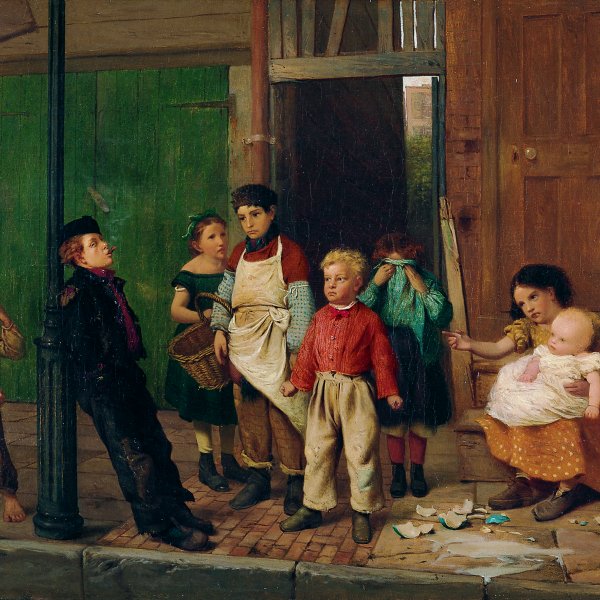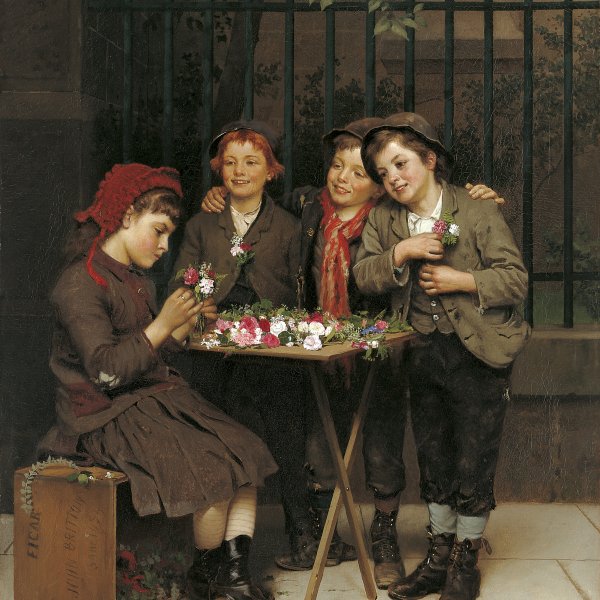John George Brown
John George Brown, the son of an impoverished lawyer, was born on 11 November 1831 near Durham, England. At fourteen he began a seven-year apprenticeship as a glass-cutter in Newcastle-on-Tyne, studying at night from 1849-1852 with William Bell Scott at the School of Design. From 1852-53 he worked at the Holyrood Glass Works, Edinburgh, studying evenings at the Trustees Academy with Robert Scott Lauder. In 1853 Brown spent the summer in London where he painted a few portraits before emigrating to America on 24 September, arriving in New York on his twenty-second birthday. He settled in Brooklyn finding work at the Brooklyn Flint Glass Company where he impressed one of the company's owners, William Owen, with his ability. During this time he attended the free classes offered at the Graham Art School and later studied under Thomas Seir Cummings at the National Academy of Design. In 1855, Brown married Owen's daughter and with his father-in-law's financial backing was able to open a studio as a portrait painter. Brown received the support of the art dealer, Samuel S. P. Avery, and John H. Sherwood, collector and builder of the Sherwood Studio Building in 1880, who encouraged his turning from portraits to children as subjects. In 1859 Brown was one of the founding members of the Brooklyn Art Society and in 1861 a founding member of the Brooklyn Art Association. He moved to New York in 1861 finding quarters in the Tenth Street Studio Building where he maintained a studio for the rest of his life. Brown began in 1858 to exhibit at the National Academy, a practice he continued every year, except 1871, until his death. He was elected an associate of the Academy in 1861, full member in 1863, and served as its vice-president from 1899-1904. After turning to genre scenes of the street children of New York City in the 1860s, he soon became famous and wealthy. Brown copyrighted many of his paintings that were often reproduced commercially as chromolithographs or photographic reproductions. In 1867 he was elected one of the original members of the American Watercolor Society and was its president from 1887-1904. Brown and the art dealer, John Snedecor, travelled to Europe in 1870, visiting both London and Paris. During the summer months, he often explored the rural areas of New York and Vermont, as well as Grand Manan Island in the Bay of Fundy. The artist died of pneumonia in New York City on 8 February 1913.
Kenneth W. Maddox






